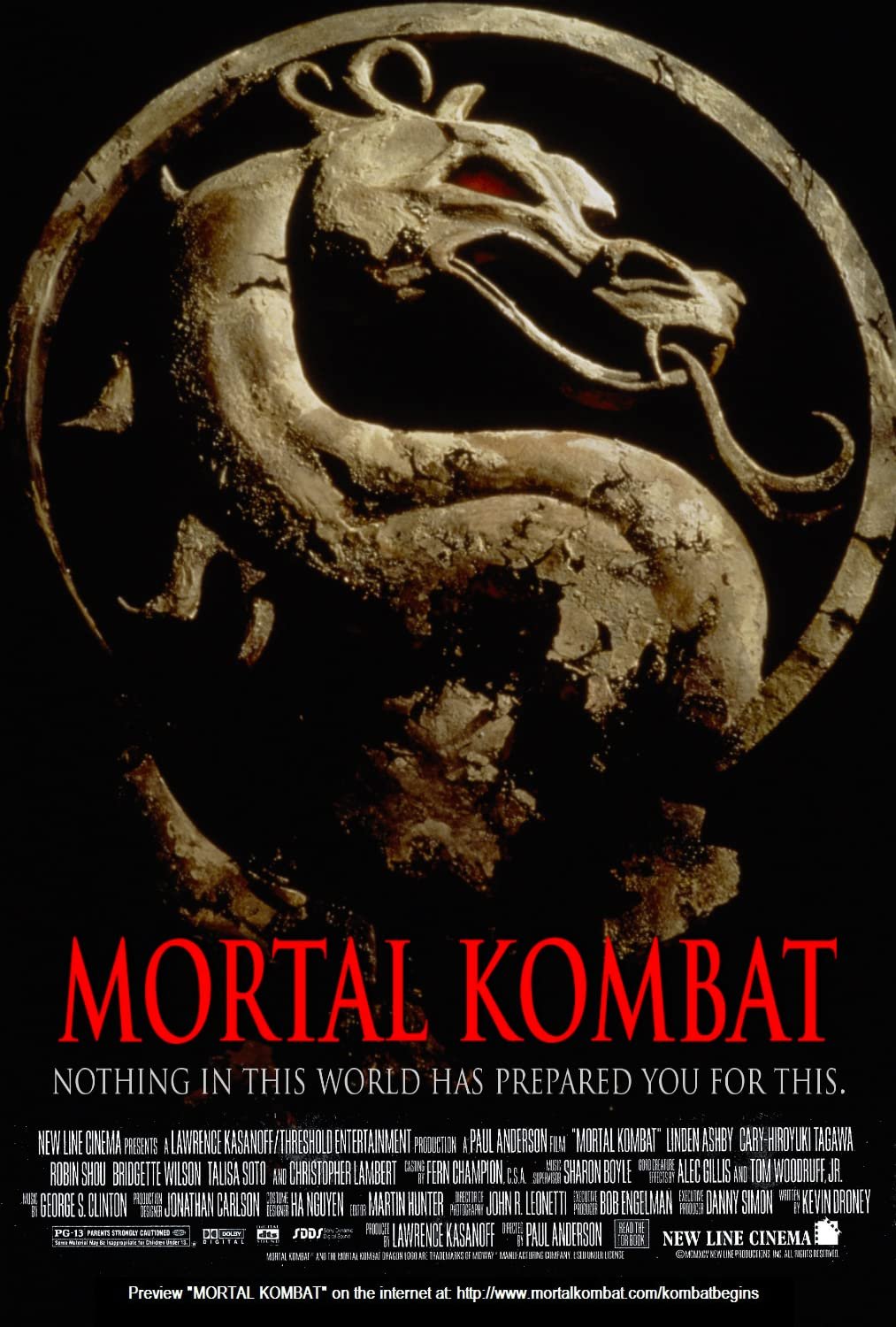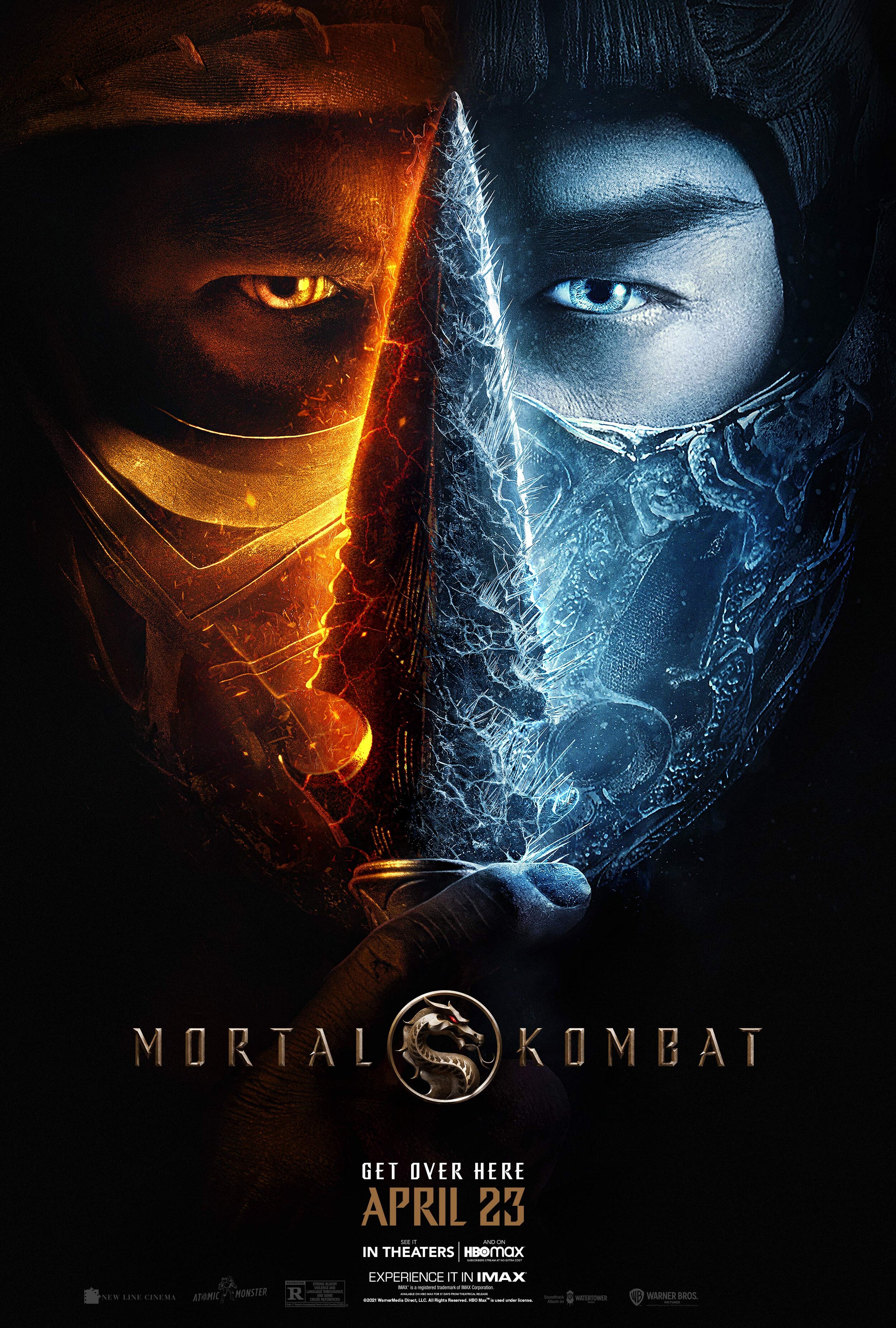Which One is Better: Mortal Kombat (1995) Vs Mortal Kombat (2021)
Are you utterly nostalgic for pure 90s entertainment, Hong Kong style choreography, fun performances and a superb soundtrack? Then you might lean towards the original adaptation. If you prefer the introduction of new concepts and a radically new take to a franchise filled with myriads of game and film entries featuring updated special effects and glorious gore? Look no further than the 2020s’ reboot. A battle of Hollywood debuts (Paul WS Anderson Vs. Simon McQuoid), ratings (PG-13 Vs R-rated) and approach to the source material! It is flawless victory for the winner, fatality for the loser! It’s time for “Mortal Kombat”. Test your might!
1.STORY
Screenwriter Kevin Droney managed to craft a story … based on the arcade’s limited information which is to be commended. Using “Enter the Dragon” (1973) as a template, his script takes its time to establish the characters, the tournament and the stakes embracing solid world building. He adds some welcome Eastern influenced wisdom about responsibility and feelings of guilt while retaining key elements from the game and a tongue in cheek tone that fits the material like a glove. Few shortcomings do exist; the female characters have limited presencef and interesting aspects remain unexplored (e.g., Subzero and Scorpion’s rivalry). On the other hand, the reboot screams a too-many-cooks-in-this-kitchen attempt. Quoid doesn’t ease newcomers spending instead precious time to introduce new (and unnecessary) concepts (e.g., arcana) and characters under mountains of exposition. Efforts to integrate drama (e.g., Liu Kang hints at a history of sexual abuse, a family is in danger) in a story that does not even follow the game further hurt the movie’s chances. But biggest sin is the rearrangement of the characters’ priority status and dynamics. Just look at Goro. He gets axed literally by someone’s wife!
Winner
2. HEROES
With three heroes representing Earthrealm (Liu Kang, Johnny Cage, Sonya Blade), the original manages to balance its simple storyline across three arcs that (mostly) bear adequate development. Although Sonya gets the end of the short stick (and sidelined in the second half), Shou and Ashby are pitch perfect as Liu Kang and Johnny Cage respectively, guided by the Highlander himself, Christopher Lambert who makes thunder god Raiden his own with a superb synthed voice, a glorious wig and an effective off-beat sense of humour in a now legendary performance. However, Talisa’s Soto’s Kitana does not do much besides being an expositional eye candy. Nevertheless, the film’s focus to Liu Kang, a non mystical Asian dude who plenty of fighting and a poignant storyline about responsibility was a groundbreaking thing for a 90s mainstream action flick. The same cannot be said for the reboot. Creating a new character in an already established lore is never a good idea. Lewis Tan’s Cole Young walks aimlessly and without an arc taking Liu Kang’s place instead who is now reduced to a secondary character that sprouts typical Asian mambo jambo. The remaining six (!) heroes compete for screentime as they either being told things or tell things; Jaxx disappears early, Sonya is not even a champion(!), Kung Lao is barely in it and the politically correct casting (which makes no sense if you follow the game) of Tadanobu Asano as Raiden and the inspired allocation of Hiroyuki Sanada as Scorpion fall flat. Only Kano comes across as a two dimensional being but Josh Lawson’s take as an over-exaggerated, averaged IQ, racist/sexist Australian bogan clown with a full tat sleeve and a bushy beard becomes really tiring really fast.
Winner
3. Villains
In the 90’s classic, Cary Hiroyuki-Tagawa gives the performance of a lifetime, making Shang Tsung his own. With excessive close ups to his expressive face, Tagawa relishes his role and delivers his lines with Shakespearean gusto (“Your soul is mine!“) and snake like charisma, embedding the character with so many traits that rightfully changed his appearance and mannerisms in the game’s mythos. Trevor Goddard’s take on Kano also became canon but his brief screen presence fails to make any impact. secondary villains like Goro (voiced by the great Kevin Michael Richardson) are clear obstacles for the heroes to go through and the infamous ninjas (Scorpion, Subzero, Reptile) are silent excuses for action. The reboot seeks to showcase villains who haven’t seen so far the cinematic light so far: Nitara, Kabal, Mileena and Reiko are present with unconvincing CGI while Goro and Reptile remain line free versions of their videogame counterparts. A miscast Chi Han portrays Shang Tsung this time around having the difficult task to fill in the shoes of Tagawa but the script does not do him any favours with a fatality being his only memorable moment while Kano’s villainous turn is nothing to write home about. The only saving grace is a convincing Joe Taslim as Subzero in a Terminator like role which is a cool idea but his power inconsistency is too large to ignore during the fights.
Winner
4. ACTION
The 95’ film has plenty of fights to begin with but some can be considered brief (and perhaps underwhelming) by today’s standards (e.g., Sonya Vs Kano). Nevertheless, it does boast aggressive (and credible) choreography when we witness martial artists having a go at each other. Being the first Hollywood feature to employ Hong Kong wire-fu choreography, contact fighting and athletic stunts, Robin Shou who served as a co-choreographer, crafted two of the most memorable fights in cinema history: Johnny Cage Vs Scorpion and Liu Kang Vs Reptile. Meanwhile his physical performance that sees him backflipping, leg-splitting, somersaulting, kicking and punching his way through an army of unique opponents with THAT body is now the stuff of legends. And this is why “Mortal Kombat” has proudly stood the test of time as a landmark martial art flick: most of the fighting and stuntwork was performed by actual martial artists, their efforts captured by Paul WS Anderson’s wide framed direction, the colorful lenses of John F. Leonetti’s and the top notch editing of Kubrick’s own editor in “Full Metal Jacket” (1987)(!) Martin Hunter.
Coming 26 years after the first adaptation, the reboot attempts to compete with more nuanced and complex martial arts flicks (e.g., “The Raid” (2011), “John Wick” (2014)). Yet, Simon McQuoid chops and edits over a thousand times a single sequence making it impossible to understand what is happening and as the film progresses, the quick (and times atrocious) editing feels like an excuse to hide the actors’ inexpertise. Lacking the visceral impact of its predecessor, the film becomes marginally alive when Joe Taslim and (to a lesser extent) Hiroyuki Sanada are on screen, even if the latter is plagued with the henchmen-waiting-to-take-their-turn syndrome in the opening credits. What is more disappointing though, is the straight out of a Netflix original stuntwork that does not have anything memorable to offer and looks too choreograph-y and as we are reaching the end, the clumsy fights overlap with each other just like they did in “Mortal Kombat: Annihilation” lacking momentum and a natural climax as opposed to the extended (and focused) showdown in the original between Liu Kang and Shang Tsung.
Winner
5. Production design and cinematography
With only 18 million dollars, it is quite impressive what Paul WS Anderson and Jonathan Carlson (production designer) managed to do. The perilous Outworld is displayed in several beautiful and detailed Babylonian sets that recreate faithfully the famous arenas from the game and putting strong emphasis on a mystical atmosphere that is accompanied by a spot on surround sound design. Meanwhile Thailand’s stunning exotic locations complement the film’s visual tone under John R. Leonetti’s luscious cinematography and Ha Nguyen’s costume design provides unique and memorable costumes for everyone involved with thematically remaining faithful to the videogame counterparts. Most of the special effects hold up remarkably well (particularly the morphing sequences and digital compositions) after almost 30 years and although the close ups of Reptile’s form look outdated now, they retain a visual charm that works well with the tone and palette of the film.
Despite having more than double of the original’s budget, the reboot’s visual style went the Nolan route which sees the film stripped from anything bearing a fantastical element. With Australia’s Adelaide posing obviously as Chicago, the film does not have anything memorable production wise plagued with questionable creative choices (e.g., Shang Tsung’s suspended throne room and entrance, Scorpion’s XL costume, Subzero’s shoulder pads) and a TV movie feeling. To make matters worse, gone are the exotic locations and vivid sets, replaced by uninspired backdrops (the majority of the film takes place in a sand pit and an MMA gym) while the costumes resemble cheap cosplay (although Kabal’s is spot on). It is clear that most of the money went to the close up effect shots of Subzero’s powers which look indeed excellent and do the character justice, but the rest bear a plastic like quality that suits better a morning Saturday TV series.
Winner
6. Score
George S. Clinton was hired as the composer for the 95’ film and he created a surprisingly effective score that emphasized primarily the mystical setting of the film. Combining traditional Japanese instruments (e.g., Taiko drums, Shakuhachi flute) with Tibetan throat monks and solos by guitar guru Buckethead, Clinton’s approach is spot on earning him a prestigious BMI award for his work. But it is The Immortals’ famous “Mortal Kombat” theme, which dresses with pulse pounding sound the opening and closing credits that became a part of the modern pop culture in a first of its kind hybrid of techno/metal soundtrack that featured Type O Negative, Fear Factory and Juno Reactor among others that plays during the film’s numerous fight sequences and became platinum instantly.
The reboot used Hans Zimmer wannabe Benjamin Wallfisch to craft the musical feel, a move that most modern blockbusters do. However, the final product did not extend beyond the typical Hans Zimmer school of music, with multiple pseudo crescendos and ambient electronic pieces that lack emotional substance and memorable tunes. Wallfisch attempts to score the supposedly serious and “realistic” on-screen events but he has little to work with delivering filler music. His score sounds flat with an up to 11 sound mix that barely registers nor it invokes any emotion while the lack of songs seems to be a wasted opportunity to form a cool soundtrack. As for that awful main theme remix during the closing credits, the less we talked about it, the better.
Winner
7. Reception
In our final round, the 95’ film stayed at the US top spot for three consecutive weeks, showing that it was possible to make a film out of a videogame that can simultaneously attract newcomers and please the fan base. It grossed $125 million dollars worldwide, its soundtrack sold like crazy and its music was immortalized forever. While its initial critic reception was mixed, upon re-evaluation (by and not limited to The Hollywood Reporter and Rotten Tomatoes), it has become a cult classic due to its charming approach to the source material, the iconic performances of Tagawa and Lambert, diverse cast, fantastic production design, beautiful locations, aggressive choreography and superb soundtrack.
The same cannot be said for the reboot, Despite having marginally better reviews (although it is unfair to compare the number of professional critics in 1995 to the armies of movie bloggers/youtubers today), it divided the fan base due to its maligned creative choices and failed to excite anyone else. Seeing fatalities was a welcome sight for sure, but the mashed-potatoe storyline and serious tone took away the mysticism and fun that a “Mortal Kombat” film should had. BO wise, the movie grossed a bit more than $80 million dollars worldwide, which was disappointing although the R rating (which the original did not have) and the dawn of HBO Max might have contribute to its final revenue.
Winner
Verdict
With 7 wins (story, heroes, villains, action, production design, music and reception), the cult classic of 1995 is the winner. Despite lacking the power of effect sophistication that we can see today, it works both as a standalone film and as a videogame adaptation. With respect to the source material and a strong focus on delivering something visually exciting and fun, it does not mock its characters and fully embraces the OTT world of an inter-dimensional tournament. Giving us iconic performances, two of the greatest fights of all time, a splendid villain and a phenomenal soundtrack/score, it is not hard to see why so many people are fond of it and why newcomers are amused by it. Flawless victory indeed!




